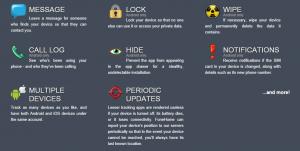Six Basic Tips for Kids to Increase Their Online Safety
The most popular slide as part of my Internet Safety Curriculum to parents is titled ‘The Basics for Kids’. It is a slide that lists 6 quick and easy tips for kids that will increase their safety. Many people ask me for a copy of this particular slide. I decided that a quick blog entry listing these tips with an explanation would be very helpful to people. Here they are.
- Change your password after logging on to another device – Most operating systems remember passwords. When your child uses a friend’s device to log on to mail, social media, or an app, the operating system will remember the password. When a few letters of the user name is entered, the rest of the user name appears and self populates both the user name and the password that goes with it. You can imagine the problems this can cause. Children change ‘best friends’ quickly and often leave some harsh feelings in their wake. The safest procedures to put in place is to teach your children to change a single letter or number in the password whenever they sign on to a device that is not their own. No need to get into a discussion about the status of the friendship. Just make it a hard and fast policy with no questions asked.
- Never give out personal information online – You certainly cannot remind your kids often enough about this rule. This includes, and certainly is not limited to, full name, age, location, phone number, family members’ names, etc. Along those same lines, remind them never to post vacation pictures. This is a clear sign that your house is empty and can be easily burglarized.
- Make sure location services is ‘off’ for the camera – There is a switch on every device that contains a camera called location services. When this is set to ‘on’, every picture and video captured with that device has metadata attached to the picture or video that provides location specific information, i.e. latitude and longitude coordinates of where the image was taken. When the pictures are posted to social media, that information about your child is readily accessible by people that you do not want knowing your child’s home address or hang out spots. You can keep location services on for applications that need it, like Google Maps, Gas Buddy, etc.
- Never share a password – Like #2, you cannot tell your child this tip often enough. ‘But Mom, she is my best friend!’ Friends come and friends go, especially at the ages of 10-18. The key is to get our kids to understand the power of the password and that the only people who are entitled to that power are themselves and parents.
- Password protect cell phones – Kids lose their phones, as well as get them stolen, very often. Similar to the power of the password, if someone picks up your child’s phone and it is unprotected, that person has the power of the password and can do very serious damage in your child’s name. One example of this is the story of the new girlfriend who picked up the boyfriend’s phone on a bus when he wasn’t looking. She texted the old girlfriend, posing as the boy, and said something like ‘I wish I never went out with you and I wish you would die.’ Unbelievable, I know, but it is a true story. The old girlfriend was found a day later after killing herself. Had that phone been password protected, that may not have happened.
- Add the app Fone Home to cell phones – Available for both iPhones and Androids, this web based app allows you to track your lost or stolen device. It has several interesting features including setting up a siren to help locate the device even if it is on vibrate, which can be helpful when the device is lost at a soccer field! Check it out: Fone Home. Here is a description of some of the features:
Obviously, there are many tips we can use to keep both our kids safe and their devices safe. These are just a few. Please feel free to comment if you have some others that would be helpful to people.


Leave a Reply
Want to join the discussion?Feel free to contribute!